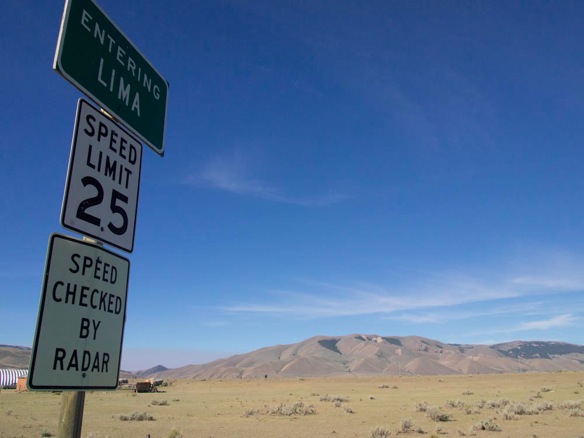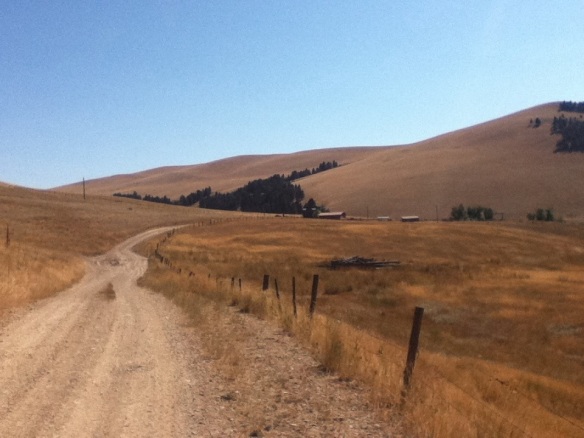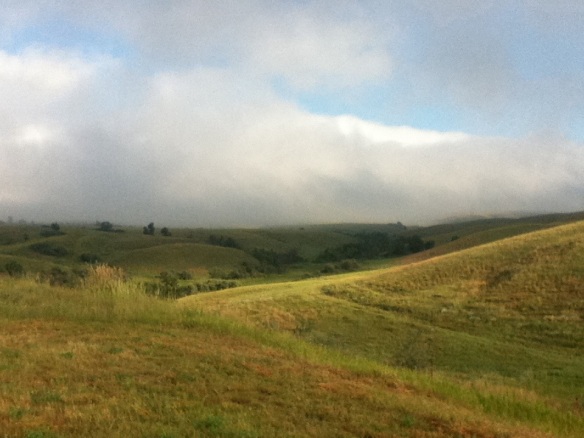
Looking around like I own the place, this is my second trip to Adventure Cycling headquarters in a year and I know where all the secret stuff is stashed. The ice cream and sodas are in the cooler, you must sign the guest book for fear of Greg Siple’s becalming wrath; and the cycling library is straight ahead, left at the tandem and right toward the kitchen. This may be the most extensive cycle-centric library in the country and it’s chock full of Dervla Murphy, Ian Hibell, Joe Kurmaskie, Barb Savage and other usual and unusual titles. There are hundreds of old travelogues; some have become timeless classics and some are out-of-date stories of sweating up hills and running out of food. In fact, while Barb Savage’s Miles From Nowhere is considered a classic bike touring text, her penchant for hyperbole is a little off-putting and after the fourth time that Larry retrieves escaped ball bearings from his freewheel, I lost interest. Still, the book is widely read and was a gateway for many American cycletourists. I was on the hunt for an adventure of a different caliber, and Ian Hibell’s Into the Remote Places was the reward. Ian’s writing is even and descriptive, with a honest sense of his immense adventure– there’s no need for hyperbole when the truth is unbelievable. The book begins with cyclists hacking a route through the Darien Gap, surviving on handfuls of rice. It continues similarly. Long out of print, it is books like these that make the ACA cycling library special. For your next trip to Missoula, set aside a day to lounge in the shade reading about riding.






Ian’s Norway to Cape Horn, South Africa bike is now prominently displayed in the reception area, featuring an old Carradice Overlander handlebar bag (the red one is not original, but is nearly identical to the black one he used) and Carradice panniers. As well, large water reservoirs are contained atop the panniers, the load supported by an integrated steel carrier. The bike is smartly packed for a trip spanning continents, and the Sahara Desert. Before the days of fatbikes such a trek required a bit of walking. Walking through too much water in the Darien Gap and with not enough water in the Sahara is what sets Ian apart from the field of long-distance cyclists, although the “field” is rather thin to begin with. He is the first to travel, completely, from Tierra del Fuego north to Alaska. At the time the road to Deadhorse at Prudhoe Bay wasn’t built, so Circle, AK near Fairbanks was the northernmost road-accessible point on the continent. In the late sixties, my boss and the owner of The Bicycle Shop in Anchorage, AK hosted an English cyclist for a week. Leaving town, he pedaled with him out to Palmer.
“An English guy?” There must be thousands, I think. “What has his name? (Pause.) Was it Ian Hibell?”
“Oh yes, Ian. He’s the only guy I’ve ever allowed to stay with me. He stayed a week.”
And so it was.

Greg Siple is always a treasure of information, especially of the early days of Bikecentennial and TOSRV. This time we spoke of the influence his father had on his cycling career, and cycling in general. Charles is still living in Ohio, and David Herlihy (author of Bicycle: A History) is soon to visit him to harvest stories of his experiences with six-day racing in America. There aren’t many living cyclists front the pre-war era. And since 1982, Greg takes our portraits for his collection; more recently he has begun to weigh the bikes that come through Missoula. Mine weighed one pound more than last year at 67 lbs, without much food or water. The heaviest bike weighed was a Swiss cyclist whose panniers contained over 174 lbs.

This photo is from my visit last year, dated September 20th. These are impromptu Polaroids taken in the office while Greg’s collection of photos are taken in the back alley in front of a large white background. Convincing the organization to pay for film in 1982 was a challenge, he said. He still shoots film, and presumably, doesn’t have to twist any arms to get it. It’s impossible to see, but Carla Majernik’s chrome Peugeot in the background features rubber handlebar grips, installed on the drops. Thirty years before I hacked Ergon grips to my drops, others were concocting similar solutions.

I’m spreading the word, and have created demand for Ian’s book and for the ACA bike library– last year George the Cyclist came looking for it and spent the entire day reading; Sean’s return to Missoula had him looking for the same title, and I told a grip of young cyclists on the Trans-Am Route about it yesterday. The door pictured at the top of the page was the entrance to the original headquarters on the second floor above Eddy’s Club on Higgins Street. In a recent trip to Missoula, Dan Burden (Dan and Lys Burden cycled the first half of Hemistour with Greg and June Siple) signed his name on the door in the night. Greg didn’t even get a visit from his old friend.












































































































